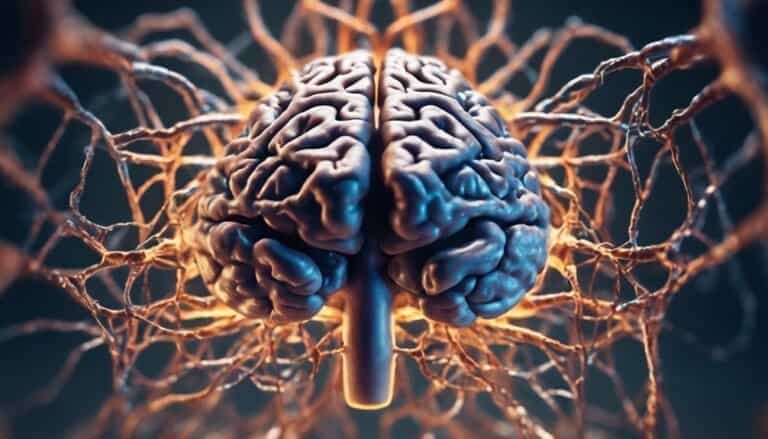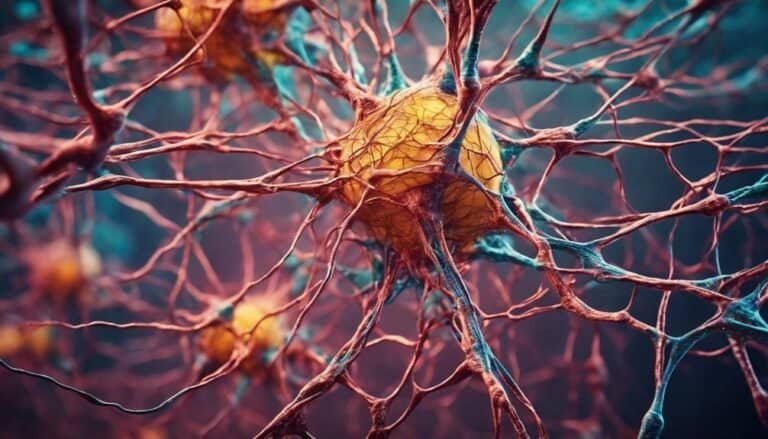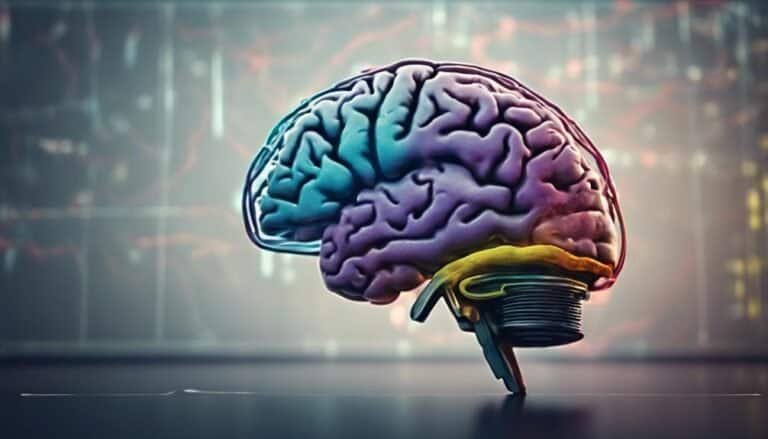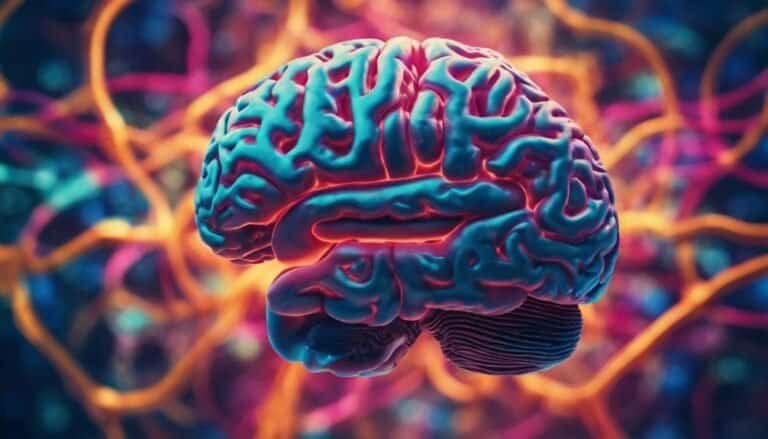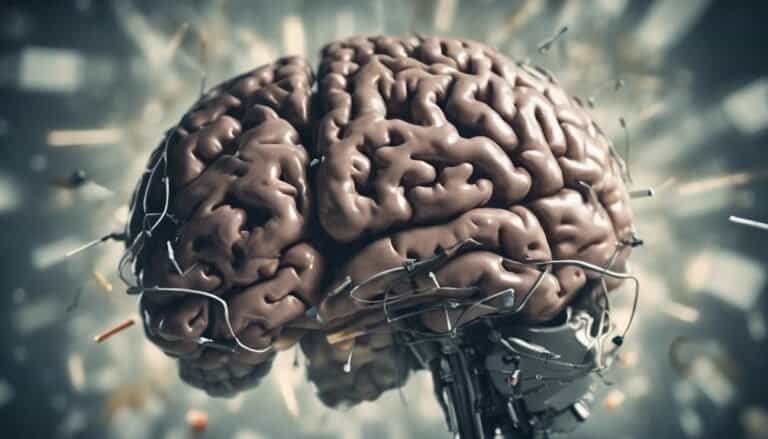Brain Responses to Positive Reinforcement
You know the saying, 'You catch more flies with honey than with vinegar.' Have you ever wondered why positive reinforcement seems to work so effectively?
Understanding how your brain responds to positive reinforcement can shed light on this age-old wisdom. As you explore the intricate mechanisms of neurotransmitter release, dopamine activation, and reward circuitry, you'll uncover the fascinating ways in which your brain processes and reacts to positive stimuli.
This knowledge might just reshape how you view the power of positivity in shaping behavior and emotions.
Key Takeaways
- Positive reinforcement activates dopamine, serotonin, and endorphins.
- Dopamine system reinforces reward-motivated behaviors.
- Neural pathways encode reward value and reinforce behavior.
- Long-term positive reinforcement enhances memory, behavior, and emotional stability.
Neurotransmitter Release
When positive reinforcement occurs, neurons in the brain release neurotransmitters such as dopamine, serotonin, and endorphins, influencing behavior and learning. This process is crucial for neurotransmitter regulation, which plays a significant role in synaptic transmission.
Neurotransmitters are chemical messengers that transmit signals across the synapse, the small gap between neurons. Upon receiving a signal, the presynaptic neuron releases neurotransmitters into the synapse. These neurotransmitters then bind to receptors on the postsynaptic neuron, triggering a response.
Dopamine, serotonin, and endorphins are key neurotransmitters involved in positive reinforcement. Dopamine is known for its role in reward-motivated behavior and reinforcement learning. Serotonin is involved in mood regulation and social behavior, while endorphins act as natural painkillers and mood enhancers.
The release of these neurotransmitters during positive reinforcement strengthens neural connections associated with the rewarded behavior, making it more likely to be repeated in the future. Understanding neurotransmitter release and synaptic transmission sheds light on how the brain processes rewards and shapes behavior.
Dopamine Activation
When you experience positive reinforcement, your brain's dopamine system becomes activated.
Dopamine plays a crucial role in the brain's reward pathways, influencing feelings of pleasure and motivation.
Understanding how dopamine activation impacts your brain's responses to rewards sheds light on the intricate neural mechanisms behind positive reinforcement.
Dopamine Role in Reward
Dopamine activation plays a critical role in mediating the brain's response to positive reinforcement stimuli. Dopamine, a neurotransmitter, is heavily involved in reward processing. Here's why it's crucial:
- Addiction Development: Dopamine dysregulation can contribute to the development of addictive behaviors.
- Dopamine Regulation: Proper dopamine release is essential for maintaining a balanced reward system.
- Learning Processes: Dopamine helps in reinforcing behaviors associated with rewards, aiding in learning and memory.
- Reward Anticipation: Dopamine levels surge not only upon receiving a reward but also in anticipation of it, driving motivated behavior.
Understanding how dopamine influences reward processing is key to comprehending various behaviors and their underlying neural mechanisms.
Pleasure and Motivation
Pivoting from the critical role dopamine plays in mediating the brain's response to positive reinforcement stimuli, the activation of dopamine is crucial in driving pleasure and motivation processes within the brain. Dopamine, a neurotransmitter, is central to the brain's reward system, influencing motivation impact and pleasure response.
When you experience something rewarding, dopamine neurons in the brain are activated, leading to an increase in dopamine release. This surge in dopamine levels reinforces behaviors associated with the reward, motivating you to seek similar rewards in the future. The impact of dopamine on motivation is profound, as it drives you to pursue activities that are linked to pleasure and reward.
Understanding the intricate interplay between dopamine, pleasure, and motivation provides insights into how the brain responds to positive reinforcement stimuli.
Reward Circuitry
In the study of brain responses to positive reinforcement, the reward circuitry plays a pivotal role in shaping behavioral responses to stimuli. This intricate system involves several brain regions working in harmony to process and reinforce rewarding experiences.
Here's a breakdown to help you understand the reward circuitry better:
- Behavioral Responses: The reward circuitry is responsible for regulating how we respond to positive stimuli, influencing our actions and decisions based on the potential for reward.
- Neural Activity: Within this circuitry, there are complex patterns of neural activity that encode the value of rewards, guiding our behavior towards beneficial outcomes.
- Neural Connections: Neural connections within the reward circuitry are constantly being refined through processes like synaptic plasticity, allowing for adaptive responses to different reinforcement scenarios.
- Learning Mechanisms: This system is closely linked to learning mechanisms, helping us associate specific actions with positive outcomes and reinforcing those behaviors over time.
Understanding the reward circuitry provides valuable insights into how our brains process rewards and motivate behavior through neural pathways.
Neural Pathways
You'll explore the intricate neural pathways involved in reward circuitry function, particularly focusing on the dopamine release pathway.
Understanding these neural pathways is crucial in deciphering how positive reinforcement influences behavior and cognition.
The intricate network of neurons and neurotransmitters plays a pivotal role in shaping our responses to rewarding stimuli.
Reward Circuitry Function
Analyzing neural pathways reveals the intricate network through which reward circuitry functions in response to positive reinforcement. When positive reinforcement occurs, the reward circuitry is activated, leading to various behavioral responses and neural activation. This process involves intricate cognitive processing and learning mechanisms that shape future behaviors.
Key components of the reward circuitry function include:
- Ventral Tegmental Area (VTA): Responsible for dopamine release in response to rewards.
- Nucleus Accumbens: Integrates information from the VTA to modulate motivation and reinforcement.
- Prefrontal Cortex: Regulates decision-making and goal-directed behaviors based on reward signals.
- Hippocampus: Encodes contextual information related to rewards, aiding in memory formation and reinforcement learning.
Understanding these neural pathways provides insight into how positive reinforcement shapes behavior and cognition.
Dopamine Release Pathway
The activation of the Dopamine Release Pathway plays a crucial role in mediating the response to positive reinforcement within the reward system. When you receive positive feedback, such as praise or a reward, this triggers a cascade of events in your brain.
Dopamine, a neurotransmitter, is released from the ventral tegmental area (VTA) in the midbrain and travels to the nucleus accumbens, a key part of the brain's reward circuitry. This pathway is essential for encoding the rewarding nature of stimuli and reinforcing behaviors that lead to positive outcomes.
Studies have shown that disruptions in the dopamine release pathway can lead to anhedonia, the inability to feel pleasure, highlighting the significance of this neural pathway in processing positive reinforcement.
Emotional Regulation
Emotional regulation plays a crucial role in modulating brain responses to positive reinforcement. When it comes to managing stress and regulating mood, your brain's ability to control emotions significantly impacts how you perceive and respond to positive reinforcement stimuli.
Here are some key aspects to consider:
- Neural Circuitry: The intricate network of brain regions involved in emotional regulation, such as the prefrontal cortex and amygdala, influences how you process positive reinforcement cues.
- Hormonal Balance: Maintaining optimal levels of neurotransmitters like serotonin and oxytocin is essential for effective emotional regulation and enhancing the reward response.
- Cognitive Flexibility: The capacity to adapt cognitive strategies in response to changing reinforcement contingencies is crucial for sustaining positive emotions.
- Behavioral Adaptation: Your ability to adjust behavior based on emotional cues and reinforcement feedback shapes how effectively you can regulate emotions in rewarding situations.
Memory Formation
Effective memory formation relies on the intricate interplay of neural networks and synaptic plasticity, crucial for encoding and retrieving information efficiently. The hippocampus plays a vital role in encoding memories through cognitive processing, converting short-term memories into long-term memories. Synaptic plasticity, the brain's ability to strengthen or weaken connections between neurons, is essential for information retention.
| Key Aspect | Description | Importance |
|---|---|---|
| Hippocampus Encoding | Responsible for converting short-term to long-term memories | Crucial for creating lasting memories |
| Cognitive Processing | Involves complex mental activities in memory encoding | Enhances memory consolidation |
| Synaptic Plasticity | Ability of synapses to change strength over time | Facilitates learning and memory storage |
| Information Retention | Process of retaining encoded information in memory | Ensures accessibility of stored memories |
Understanding how the hippocampus and synaptic plasticity interact is fundamental in comprehending memory formation and the mechanisms behind efficient information retention. By optimizing these processes, one can enhance memory consolidation and improve overall cognitive abilities.
Behavioral Conditioning
Pivoting from the intricate neural processes involved in memory formation, delve into the realm of behavioral conditioning to explore how external stimuli shape responses in the brain.
When it comes to behavioral conditioning, here are some key points to consider:
- Learning Process: Behavioral conditioning is a fundamental aspect of the learning process, where associations between stimuli and responses are formed.
- Behavioral Response: Through behavioral conditioning, individuals exhibit specific responses to various stimuli, showcasing the impact of external factors on behavior.
- Positive Reinforcement: Positive reinforcement plays a crucial role in behavioral conditioning by rewarding desired behaviors, increasing the likelihood of their recurrence.
- Behavioral Changes: Over time, consistent positive reinforcement leads to behavioral changes as the brain associates certain actions with favorable outcomes, shaping future behaviors accordingly.
Understanding how behavioral conditioning influences behavior sheds light on the intricate mechanisms through which external stimuli impact our actions and choices.
Long-Term Effects
Long-term effects of behavioral conditioning on the brain manifest through sustained modifications in response patterns to stimuli over extended periods. Behavior modification resulting from positive reinforcement has a profound impact on emotional stability. Studies show that individuals who undergo consistent positive reinforcement exhibit increased emotional regulation and resilience in the face of challenges. This enhanced emotional stability can lead to more adaptive coping mechanisms, contributing to overall well-being.
Furthermore, cognitive development significantly benefits from long-term behavioral conditioning. The reinforcement of desired behaviors reinforces neural pathways associated with learning and memory, promoting cognitive flexibility and problem-solving skills. These cognitive enhancements can translate into improved academic performance and professional success.
Social interactions also experience positive changes following extended periods of behavior modification. Individuals who've undergone consistent positive reinforcement tend to display more prosocial behaviors, enhancing their relationships with others and fostering a supportive social network. Overall, the long-term effects of behavioral conditioning on the brain are multifaceted, impacting emotional stability, cognitive development, and social interactions in significant ways.
Conclusion
In conclusion, when positive reinforcement is received, neurotransmitter release triggers dopamine activation in the reward circuitry, creating neural pathways that regulate emotions, form memories, and condition behaviors.
This process leads to long-term effects on brain responses. Like a well-oiled machine, the brain responds to positive reinforcement with precision and efficiency, paving the way for continued learning and adaptation.


